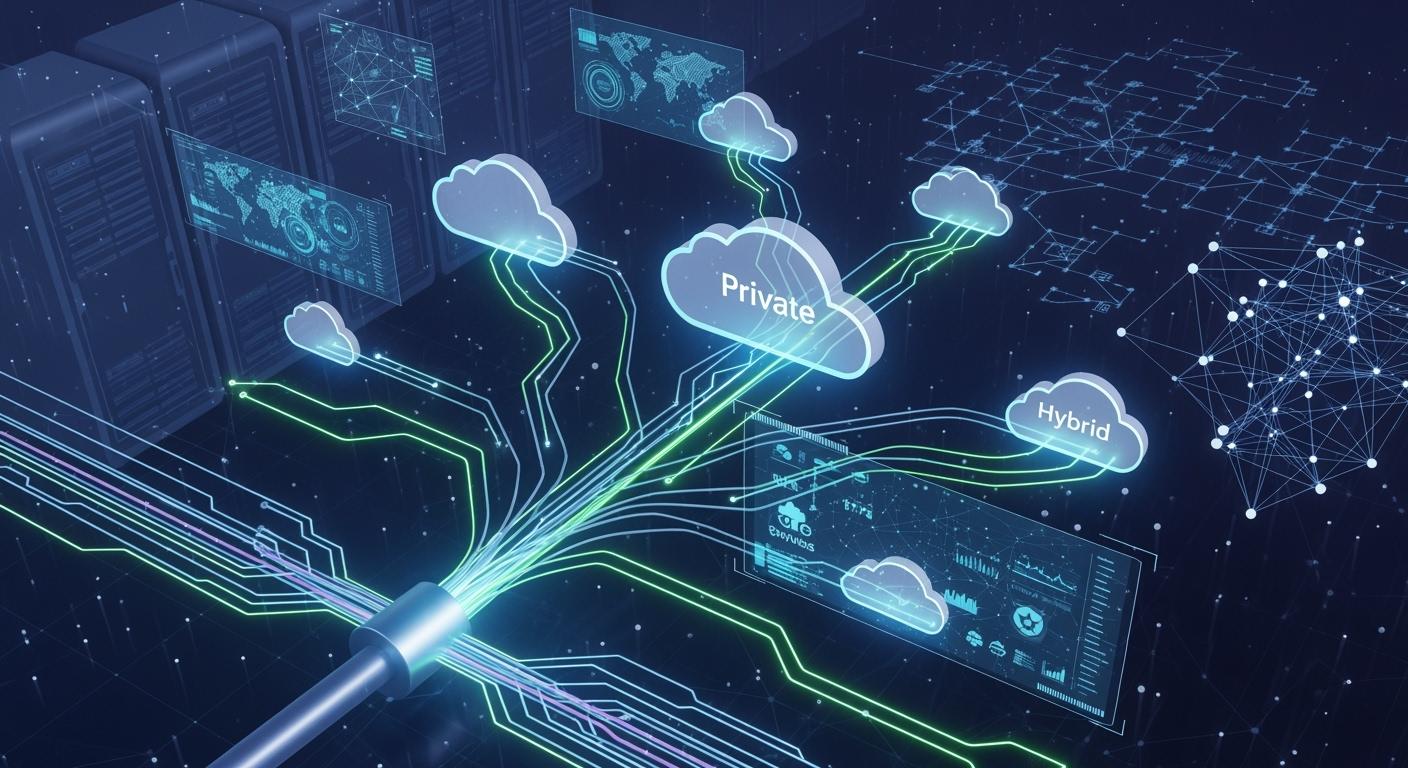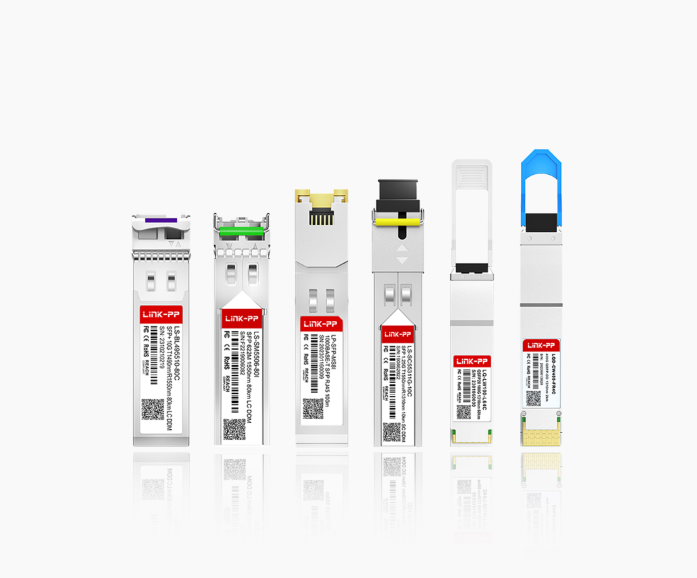
In the modern enterprise, the cloud is not a single destination but a dynamic ecosystem. Private and hybrid cloud deployments have become the cornerstone of digital transformation, offering a blend of security, control, and scalability. However, the backbone that makes these complex architectures perform seamlessly is often overlooked: the network.
Traditional copper-based networks are increasingly becoming a bottleneck, struggling to keep up with the massive east-west data traffic within data centers and the high-bandwidth demands of connecting to public clouds. This is where high-performance optical networking emerges as a critical enabler, providing the speed, capacity, and agility required for modern cloud infrastructure.
This article will explore why optical networking is indispensable for your private and hybrid cloud strategy and how it directly impacts performance, efficiency, and cost.
📝 Why Your Cloud Strategy Demands Optical Networking
At its core, optical networking uses light to transmit data through fiber optic cables. Unlike electrical signals in copper, light signals are immune to electromagnetic interference, can travel much longer distances without degradation, and carry exponentially more data.
In the context of private and hybrid clouds, the network must support:
High-Bandwidth, Low-Latency Links: For seamless application performance between on-premises servers and cloud instances.
Massive East-West Traffic: The constant communication between servers, storage, and services within a private cloud data center.
Scalable and Flexible Interconnects: The ability to quickly scale bandwidth up or down to connect with various public cloud providers.
Failing to meet these requirements can lead to application latency, data bottlenecks, and inconsistent user experiences, ultimately undermining the benefits of a hybrid cloud model.
📝 Key Advantages of Optical Networking in Cloud Environments
Integrating a robust optical infrastructure delivers tangible benefits that align perfectly with cloud objectives.
✔ Unmatched Bandwidth and Scalability: Fiber optics provide a clear path to 100G, 400G, and beyond. This future-proofs your investment, allowing you to scale network capacity on-demand without a complete physical overhaul—a crucial factor for scalable hybrid cloud connectivity.
✔ Ultra-Low Latency: The speed of light is, practically speaking, the fastest medium for data transfer. For latency-sensitive applications like real-time analytics, financial trading, or distributed databases, this minimal delay is non-negotiable.
✔ Enhanced Security and Reliability: Fiber cables do not emit electromagnetic signals, making them extremely difficult to tap into without physical detection. This provides an inherent security layer for sensitive data traversing your private cloud and the links to your public cloud partners.
✔ Improved Power and Cost Efficiency: Optical links can transmit data over much longer distances than copper while using less power per gigabit transferred. This reduces both your energy costs and the need for intermediary signal boosters.
Comparison: Optical vs. Traditional Networking for Cloud
Feature | Traditional Copper Networking | Optical Networking |
|---|---|---|
Maximum Bandwidth | Limited (e.g., 10/40GbE over short distances) | Extremely High (100G, 400G, 1.6T+) |
Latency | Higher due to signal conversion and interference | Ultra-Low |
Maximum Distance | Short (within a rack/row) | Very Long (up to kilometers without boosters) |
EMI/RFI Immunity | No | Yes |
Total Cost of Ownership (TCO) | Higher for scaling bandwidth | Lower over the long term |
Ideal For | Top-of-Rack connectivity | Data Center Interconnect (DCI), backbone, high-capacity cloud links |
📝 The Heart of the Network: Understanding Optical Transceivers

An optical network is more than just fiber cables. The crucial components that convert electrical signals from network switches into optical light signals (and vice versa) are the optical transceivers, or modules. Choosing the right transceiver is paramount for network performance, compatibility, and reliability.
Transceivers come in various form factors (e.g., SFP+, QSFP28, QSFP-DD) supporting different speeds and wavelengths. They are the workhorses that enable the high-speed links between your core switches, storage area networks, and direct cloud interconnects.
For organizations looking to build a best-in-class optical network for data center and cloud applications, selecting a vendor that offers high-quality, reliable, and compatible modules is essential.
📝 Spotlight on LINK-PP QSFP28-100G-LR4: Powering High-Density Cloud Links
When deploying 100G infrastructure for your cloud backbone, the quality of your transceivers cannot be an afterthought. This is where proven solutions from manufacturers like LINK-PP make a significant difference.
A prime example is the LINK-PP QSFP28-100G-LR4 transceiver. This module is engineered to meet the rigorous demands of modern cloud deployments.
High Performance: It supports 100Gbps data rates over a single-mode fiber (SMF) for distances of up to 10 kilometers. This makes it ideal for connecting data centers within a campus or establishing high-speed links to a colocation facility.
Cloud-Optimized: The LINK-PP QSFP28-100G-LR4 is perfect for creating high-bandwidth, low-latency spines in a private cloud or for the dedicated connections that form the foundation of a robust hybrid cloud network architecture.
Reliability and Compatibility: LINK-PP ensures its modules are rigorously tested for compatibility with major networking hardware brands, providing peace of mind and reducing deployment risks. By choosing a trusted brand, you mitigate the potential for network downtime and performance issues.
Integrating specific, high-performance components like this LINK-PP optical transceiver is a strategic decision for building a resilient and high-performing cloud network.
📝 Implementing Your Optical Network: A Strategic Approach
Building an optical network for the cloud requires careful planning.
Assess Current and Future Needs: Analyze your expected data growth, application latency requirements, and cloud connectivity plans.
Choose the Right Technology: Decide between wavelengths (CWDM/DWDM) for maximizing fiber capacity or standard grey optics for point-to-point links.
Prioritize Interoperability: Ensure that your chosen optical components, including LINK-PP transceivers, are fully compatible with your existing and future switchgear.
Plan for Management: Implement a network management system that can monitor the health and performance of your optical infrastructure, providing visibility into every link.
A well-planned optical networking solution is not an expense; it's an investment that enables all other cloud technologies to function at their peak.
📝 Conclusion: Enabling the Future-Proof Cloud
Optical networking is no longer a luxury for futuristic data centers; it is a fundamental requirement for any enterprise serious about its private and hybrid cloud deployments. It provides the high-speed, low-latency, and secure foundation upon which agile and scalable cloud services are built.
By understanding the technology, its benefits, and the critical role of components like high-quality optical transceivers from providers such as LINK-PP, you can design a network that not only meets today's demands but also seamlessly scales for tomorrow's challenges. Don't let your network be the weakest link in your cloud journey.
📝 FAQ
What makes optical networking better than copper cables?
Optical networking gives you faster speeds. It has less signal loss. Fiber optic cables use light to send data. Your data goes farther and stays strong. Copper cables slow down over long distances. They also get more interference.
Can you use optical networking with your current cloud setup?
Yes, you can add optical networking to most cloud systems. You might need to upgrade some hardware first. Many companies use both old and new equipment during the switch.
How does optical networking help with security?
Fiber optic cables are hard for others to tap. Your data stays private and safe from threats. You can split your network to protect sensitive information.
Is optical networking expensive to maintain?
You spend less on repairs because fiber cables last longer. You save money over time with fewer outages and less downtime. You also use less power, so your bills are lower.




